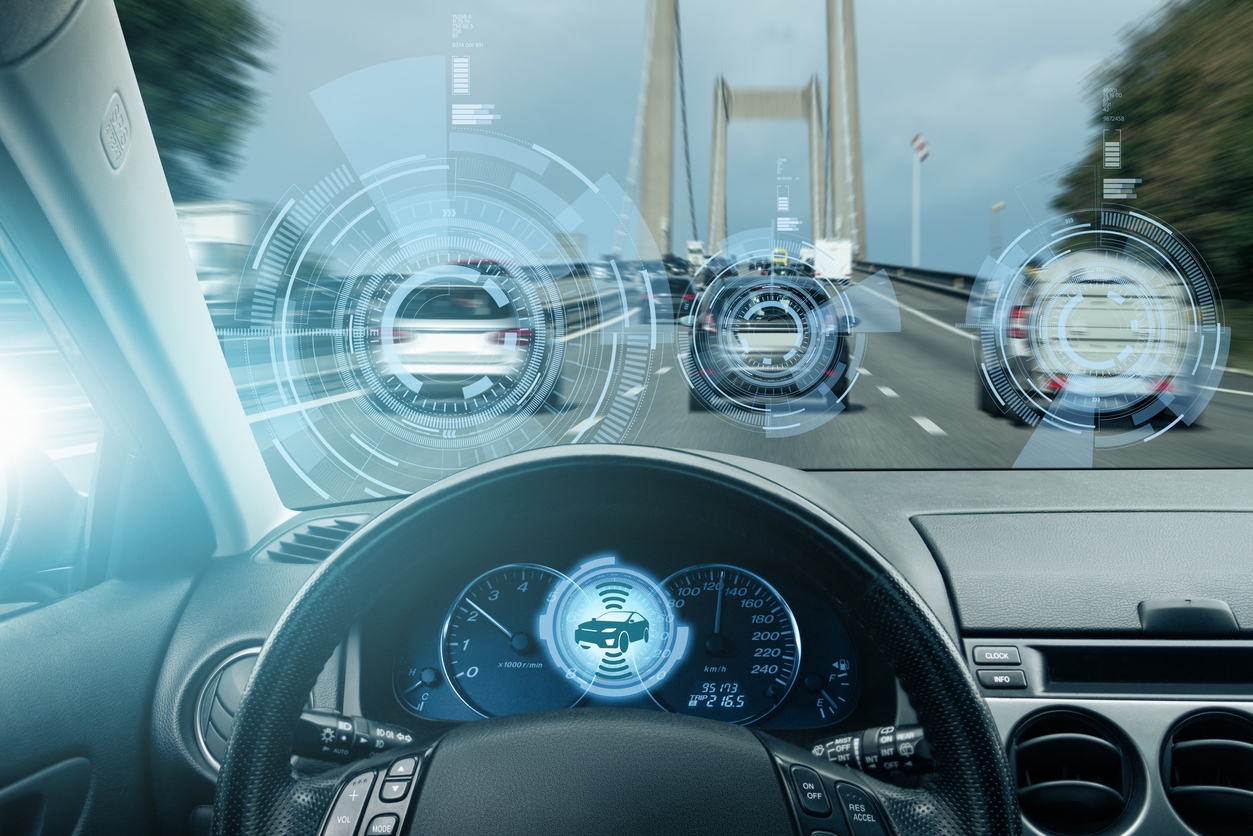In 2009, Google began the self-driving car project that would eventually become Waymo, a driverless taxi service that is already performing test taxi services in limited areas of Pheonix, Arizona. These taxis are capable of handling fully self-directed automation, with a clearly empty driver’s seat and a voiced reminder to new passengers that there is “no one up front” when they load in. While Waymo One’s driverless taxi service is clearly only the beginning, what does the future really have in store for self-driving cars? That depends on the people who innovate it.
Waymo teams and others across the world innovating self-driving software, sensors, and situation management protocols are those who are literally driving us forward into the future of self-driving cars. Even from this early spot in self-driving history, we can already see to the horizon. Personal vehicles will become little living spaces where commuters start work early or catch an extra nap. Highways will be like train lines, without human motivation to jostle for the position or even break a traffic law. Awkward conversations with your Uber driver will be a thing of the past because your car will not only be your designated driver, it will be summonable to you like a Waymo One taxi.
The Early Years of Self-Driving Cars
“Self-driving” is one of those concepts that is easier said than done. There’s a reason that Google’s original self-driving project has seen more than a decade of labor before the Waymo One service is ready for testing on live city streets. As any experienced driver can attest, just a trip to the store involves hundreds of tiny decisions. Accelerate or coast? Is that pedestrian about to step off the curb? Is that oncoming car going slow enough to turn out? Lastly, is that drifting car about to enter your lane? Self-driving cars need to be just as aware and sophisticated in their decision-making as a real human driver. They must better adapt to the erratic behavior of human drivers on the road.
This is why self-driving technology has been more slowly staged into modern vehicles.
The Levels of Self-Driving Ability in Cars
- Level 0 – No autonomy
- Level 1 – One autonomous feature
- Lane assist
- Cruise control
- Level 2 – Two simultaneous automated tasks
- Steering and accelerating
- Collision avoidance maneuvers
- Level 3 – Conditional automation
- Able to navigate under very limited conditions
- Parking lot self-driving valet
- Level 4 – Fully autonomous, but not sophisticated enough for live traffic
- Operate in protected and geofenced areas
- Does not need a human
- May be weather limited
- Level 5 – Full automation in all conditions
- Able to handle live human and robo-traffic
- No need for a driver, can be designed without a steering wheel
- Not yet achieved
Self-Driving Features in Modern Cars: Autopilot and Driver Assist
You may have noticed that recent models of most vehicles now include some level of driver assist technology – pieces of what is used in a potentially fully self-driving vehicle. Radar-assisted cruise control will slow down as it detects your car approaching slower cars or objects ahead. Collision detection will sound an alarm, hit the brakes, and may even attempt wheel-based evasive maneuvers.
Tesla’s autopilot feature – while still unreliable – will sometimes detect a pedestrian as they step off the curb and come to a stop. However, all of these features still require a driver to remain engaged with hands on the wheel to take control. The only instance where limited autopilot should work without a driver is in parking lots using the auto-valet trick.
Self-Driving Cars in the Next Five Years
What can we expect from self-driving car technology and roll-out in the next five years? Right now, Waymo, Tesla, and other self-driving developers are facing the very serious hurdle of graduating from Level 4 to Level 5. Waymo One vehicles handle an increasing number of circumstances and adverse road conditions. However, it’s not ready for prime time yet.
In the next five years, expect to see us push the bar – not in great flying-car leaps and bounds, but in modest and safely tested steps. Fatal Tesla autopilot accidents are enough to show why it’s important for any self-driving technology to be tested to exhaustion before lives are trusted to driverless trips on live city streets.
More Driverless Vehicles on Commercial Grounds
One thing we love to see is how driverless vehicles are being tested in mock cities and low-traffic neighborhoods. This reveals the next great potential likely to unlock in the next five years; driverless vehicles in resorts, theme parks, golf clubs, and other places where there are roads – but very little and very predictable vehicle traffic. Driverless cars and people-pods going slow speeds on commercial paths allow practical, profitable, and crowd-drawing applications while we create endless safe testing scenarios for the technology under controlled conditions.
Driverless Vehicles in Hazardous Conditions
We also expect to see more autonomous vehicles in hazardous conditions. Just as robo-dogs have been used for agile inspections of power plants and factory equipment, autonomous vehicles can deliver equipment and perform important tasks in dangerous areas without putting lives at risk.
The 10-Year Potential of Self-Driving Cars
What will we see in the ten-year future of self-driving vehicles?
Self-Driving Taxis in All or Most Cities
In ten years, Waymo will have doubled its development time and have had a decade of live street testing. By 2032, we will likely see self-driving taxis in most major cities, capable of handling an increased level of chaos and ever-widening geofenced service areas.
Self-Driving Commercial Vehicles Everywhere
We absolutely expect to see the commercial sector take to self-driving vehicles as soon as safety and reliability assurances will allow. We are already facing a generational shortage of professional drivers, and companies have every reason to provide everything from trolley service to truck deliveries using reliable self-driving vehicles. After all, a computer doesn’t have to stop for sleep and never looks away from its sensors.
Leisure, utility, and high-risk situations are all complimented by increasingly capable self-driving vehicles.
Increasing Automation for Commuters
Commuters are already using incomplete autopilot features to take over long and short routine drives. In ten years, we expect that most commuter vehicles will have graduated from driving-assist to an improved autopilot – ideally feeding all our use-case data to researchers who are making that autopilot ever-safer and more responsive.
As the number of live drivers on the road is replaced by auto-commuters, we will likely see a change in traffic patterns. Perhaps with whole reserved lanes for automatic drivers vs those with their hands and feet on the controls. We may also see a greater evolution of signs, road painting techniques, and maybe even vehicle paint designs. Indeed, these improve the responsiveness from self-driving vehicle sensors.
The Glorious (Distant) Self-Driving Future
What about when we finally and fully master level 5 self-driving automation?
The ultimate future of the self-driving car will likely see a transformation of the freeways into conveyor belts, a flexible train system that runs on wheels. In-town cars will likely transfer to entirely electric, with many parking spots converted for docked self-charging. Those who choose to drive by hand will likely become seen as we see motorcycles today – rushed, reckless, but probably highly skilled.
All commercial vehicles that do not require a human driver will transition to self-driving due to the lowered risk. Interior designers will branch into car-pod living space design. Then, people will eventually forget that there were ever pedals and wheels in a car at all. We may even see an end to forward-facing seats.
Becoming Part of the Future in Tech
From cruise control to wheel-free automation, none of this would be possible without the brilliant engineers, software developers, and testers who innovated the technology. Each of the professionals who have created self-driving cars started their tech career at the beginning. With Woz U, you and set your feet on a path that could lead to automation, complex systems, and advanced automotive technology.
Want to become more versed in tech? Woz U is here to help with the training needed to begin that journey. When you want to begin the journey and new career, WOZ Partner Institutions is here to help. With 10 courses over the course of 33 weeks, you can start your journey in no time. Contact us to begin in tech.





